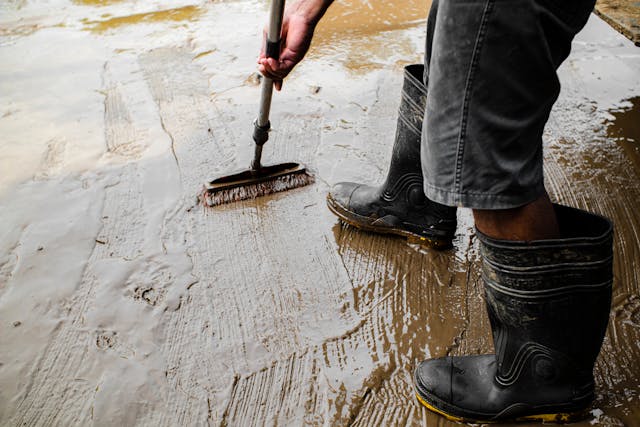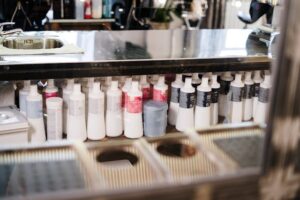When accidents happen, such as spilling a Styrofoam and acetone mix on your favorite shoes, it can be frustrating and overwhelming. Styrofoam, when combined with acetone, creates a sticky, stubborn mess that can quickly damage your shoes if not cleaned properly. If you’re wondering how to remove Styrofoam and acetone mix from your shoes, this article is your go-to guide. We will explore the best methods for safely cleaning your shoes and preventing any lasting damage, ensuring they remain in top condition.
The combination of Styrofoam and acetone is notorious for causing damage to shoes, especially if the shoes are made from delicate materials like leather, suede, or fabric. Acetone, while effective in dissolving Styrofoam, can also strip away the finish or stain the fabric of your footwear. But fear not—there are steps you can take to safely remove Styrofoam and acetone mix from your shoes, restoring them to their original state.
Throughout this article, we’ll break down the step-by-step process, explore the tools and cleaning agents you can use, and provide helpful tips to remove Styrofoam and acetone mix from shoes efficiently. By the end, you will have the confidence and knowledge to tackle the issue without stress. So let’s dive into the world of shoe cleaning and learn how to remove Styrofoam and acetone mix from shoes effectively.
Identifying the Type of Shoe Material
Before diving into the process of cleaning, it’s crucial to understand the type of material your shoes are made from. Different materials require different cleaning approaches, so identifying the type of material will help you remove Styrofoam and acetone mix from your shoes without causing damage.
Leather Shoes
Leather shoes are a common type of footwear, and they require special care to avoid any permanent damage. Acetone can strip the finish of leather, leading to discoloration or cracking. When dealing with Styrofoam and acetone on leather shoes, it’s essential to act quickly, using only minimal acetone and applying gentle pressure to avoid damaging the surface.
Suede and Nubuck Shoes
Suede and nubuck are delicate materials that can easily absorb acetone, which may result in permanent staining. These materials are also highly sensitive to moisture, so you’ll need to be extra cautious when removing Styrofoam and acetone mix from shoes made of these materials. A gentle touch and the right cleaning products will be your best friends.
Canvas and Fabric Shoes
Canvas and fabric shoes are less susceptible to damage from acetone but still require careful handling. While acetone will effectively dissolve the Styrofoam, prolonged contact with acetone may cause fading or weakening of the fabric. When cleaning these types of shoes, ensure that you’re using a light hand and avoiding excessive moisture.
Rubber or Synthetic Shoes
Rubber or synthetic shoes are more durable and resistant to damage from acetone. However, it is still important to remove Styrofoam and acetone mix from shoes quickly to avoid any lingering stains. The cleaning process for rubber shoes may involve scrubbing and rinsing, as these materials tend to hold onto debris and stains.
Necessary Tools and Materials for Cleaning
To effectively remove Styrofoam and acetone mix from your shoes, you’ll need a few essential tools. Having the right equipment will make the cleaning process much smoother and less stressful.
Acetone or Nail Polish Remover
Acetone is the key ingredient in breaking down Styrofoam, and you’ll need it to dissolve the mix. If you don’t have pure acetone, you can use nail polish remover, which typically contains acetone. Be sure to use it sparingly and apply it carefully to avoid damaging your shoes.
Soft Cloth or Sponge
A soft cloth or sponge is essential for cleaning the Styrofoam and acetone mix off your shoes. Choose a cloth that is gentle enough to avoid scratching or damaging the surface of your shoes while being absorbent enough to wipe away the mess effectively.
Cotton Balls or Swabs
For detailed cleaning, cotton balls or swabs can help you target small areas where the Styrofoam and acetone mix may have spilled. These tools are especially useful for delicate materials that require precision.
Mild Detergent or Soap
After removing the Styrofoam and acetone mix, it’s a good idea to clean the shoes with mild soap or detergent. This will help remove any leftover acetone residue and neutralize any chemicals on the shoes, preventing long-term damage.
Protective Gloves
Since acetone can be harsh on the skin, it’s advisable to wear protective gloves while cleaning your shoes. This will protect your hands from irritation and make the process more comfortable.
Shoe Cleaner or Conditioner
For shoes made from leather or suede, a specialized shoe cleaner or conditioner is helpful to restore the material’s original luster after cleaning. It will also help protect your shoes from future damage caused by exposure to acetone.
Step-by-Step Guide to Removing Styrofoam and Acetone Mix from Shoes
Now that you’ve gathered your materials, it’s time to start cleaning. Follow these steps carefully to remove Styrofoam and acetone mix from your shoes without causing any damage.
Step 1: Blot the Area Immediately
When you first notice that Styrofoam and acetone have spilled onto your shoes, it’s crucial to act quickly. Use a clean, dry cloth to blot the area. This will help absorb excess acetone and prevent it from soaking into the material, especially if your shoes are made from delicate fabrics like suede or leather.
Step 2: Test Acetone on a Small Area
Before applying acetone directly to the affected area, it’s essential to test it on a small, inconspicuous spot. This will help you determine whether acetone will damage the material of your shoes. If the test area shows signs of discoloration or damage, it’s best to use a gentler cleaning method.
Step 3: Apply Acetone Carefully
Once you’ve confirmed that acetone won’t harm the material, apply a small amount to a soft cloth or cotton ball. Gently dab the cloth or cotton ball onto the Styrofoam and acetone mix. Allow the acetone to dissolve the Styrofoam, but avoid soaking the shoe in acetone to prevent any damage.
Step 4: Wipe Away the Mixture
Once the Styrofoam begins to dissolve, use the cloth or sponge to gently wipe away the mixture. Be patient and avoid using excessive force, as this could cause the acetone to damage the shoe’s surface.
Step 5: Clean the Area with Soap and Water
After you’ve successfully removed the Styrofoam and acetone mix from your shoes, clean the area with a mixture of mild detergent and water. This will help remove any remaining acetone residue and ensure your shoes are clean and safe.
Step 6: Condition the Shoes
For shoes made of leather or suede, use a shoe conditioner to restore their softness and appearance. Apply the conditioner according to the product’s instructions, and let it dry completely.
Step 7: Allow Shoes to Dry
Once you’ve completed the cleaning process, allow your shoes to air dry completely. Avoid placing them in direct sunlight or using artificial heat sources, as this can cause the material to warp or crack.
Common Mistakes to Avoid When Cleaning Shoes
While cleaning Styrofoam and acetone mix from your shoes, it’s important to avoid certain mistakes that can lead to irreversible damage.
Using Too Much Acetone: Applying too much acetone can cause the material of your shoes to weaken or discolor. Always use acetone sparingly and apply it carefully.
Scrubbing Too Hard: Aggressive scrubbing can scratch or damage the surface of your shoes. Use gentle movements to avoid causing harm.
Not Testing First: Failing to test acetone on a small area of your shoes can result in unexpected damage. Always test before applying it to the main surface.
Skipping the Conditioning Step: After using acetone, it’s important to condition your shoes to restore moisture and protect them from further damage.
Additional Tips for Preventing Styrofoam Spills on Shoes
While it’s helpful to know how to remove Styrofoam and acetone mix from shoes, it’s even better to prevent such accidents in the first place. Here are a few tips to keep your shoes safe:
Store Acetone Safely: Always store acetone in a secure location away from your footwear to avoid spills.
Be Cautious with Styrofoam: Handle Styrofoam with care, especially if you’re working with acetone nearby. If possible, avoid working with both substances in close proximity to your shoes.
Use Protective Covers: When working with Styrofoam or acetone, consider wearing an old pair of shoes or covering your shoes with plastic to prevent any accidental spills.
Conclusion: How to Remove Styrofoam and Acetone Mix from Shoes
Removing Styrofoam and acetone mix from shoes may seem daunting at first, but with the right tools and techniques, you can restore your footwear to its original condition. By acting quickly, using the right cleaning agents, and being gentle with the cleaning process, you can effectively remove the sticky mess without causing any lasting damage.
Remember to always test acetone on a small area of your shoes first and take precautions to avoid overexposure to the chemical. Whether you’re cleaning leather, suede, canvas, or rubber shoes, following the proper steps will ensure that your shoes stay looking great for years to come.
With these tips in mind, you’ll be able to confidently tackle any Styrofoam and acetone mess that comes your way, keeping your shoes clean, protected, and in excellent shape.





